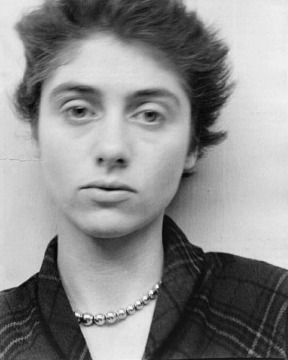
Diane Arbus was an American photographer. She photographed a wide range of subjects including strippers, carnival performers, nudists, people with dwarfism, children, mothers, couples, elderly people, and middle-class families. She photographed her subjects in familiar settings: their homes, on the street, in the workplace, in the park. "She is noted for expanding notions of acceptable subject matter and violates canons of the appropriate distance between photographer and subject. By befriending, not objectifying her subjects, she was able to capture in her work a rare psychological intensity." In his 2003 New York Times Magazine article, "Arbus Reconsidered", Arthur Lubow states, "She was fascinated by people who were visibly creating their own identities—cross-dressers, nudists, sideshow performers, tattooed men, the nouveaux riches, the movie-star fans—and by those who were trapped in a uniform that no longer provided any security or comfort." Michael Kimmelman writes in his review of the exhibition Diane Arbus Revelations, that her work "transformed the art of photography ". Arbus's imagery helped to normalize marginalized groups and highlight the importance of proper representation of all people.
Events from the year 1967 in art.

Richard Avedon was an American fashion and portrait photographer. He worked for Harper's Bazaar, Vogue and Elle specializing in capturing movement in still pictures of fashion, theater and dance. An obituary published in The New York Times said that "his fashion and portrait photographs helped define America's image of style, beauty and culture for the last half-century".

Minor Martin White was an American photographer, theoretician, critic, and educator.

Steve McCurry is an American photographer, freelancer, and photojournalist. His photo Afghan Girl, of a girl with piercing green eyes, has appeared on the cover of National Geographic several times. McCurry has photographed many assignments for National Geographic and has been a member of Magnum Photos since 1986.
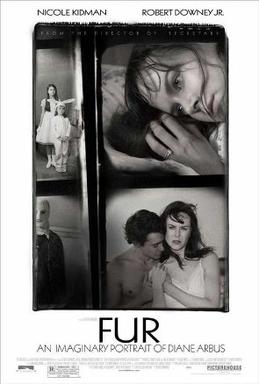
Fur: An Imaginary Portrait of Diane Arbus is a 2006 American romantic drama film directed by Steven Shainberg and written by Erin Cressida Wilson, based on Patricia Bosworth's book Diane Arbus: A Biography. It stars Nicole Kidman as iconic American photographer Diane Arbus, who was known for her strange, disturbing images, and also features Robert Downey Jr. and Ty Burrell. As the title implies, the film is largely fictional.
Amy Arbus is an American photographer. She teaches portraiture at the International Center of Photography, Anderson Ranch, NORD photography and the Fine Arts Work Center. She has published several books of photography, including The Fourth Wall which The New Yorker called her "masterpiece". Her work has appeared in over 100 periodicals including The New Yorker, Vanity Fair, Rolling Stone, Architectural Digest, and The New York Times Magazine. She is the daughter of actor Allan Arbus and photographer Diane Arbus, the sister of writer and journalist Doon Arbus, and the niece of distinguished poet Howard Nemerov.
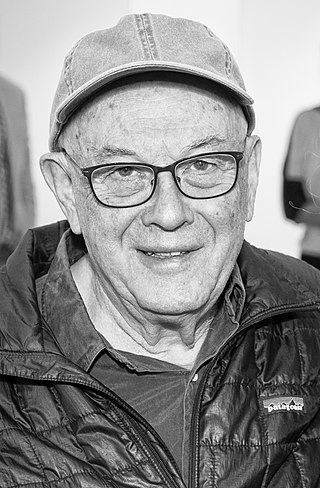
Bruce Landon Davidson is an American photographer, who has been a member of the Magnum Photos agency since 1958. His photographs, notably those taken in Harlem, New York City, have been widely exhibited and published. He is known for photographing communities that are usually hostile to outsiders.
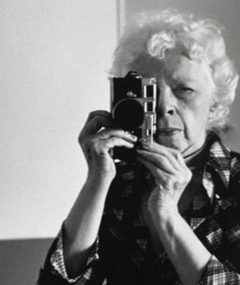
Lisette Model was an Austrian-born American photographer primarily known for the frank humanism of her street photography.

Samuel Joseph Haskins, was a British photographer, born and raised in South Africa. He started his career in Johannesburg and moved to London in 1968. Haskins is best known for his contribution to in-camera image montage, Haskins Posters (1973) and the 1960s figure photography trilogy Five Girls (book) (1962), Cowboy Kate & Other Stories (1964) and November Girl (book) (1967), plus an ode to sub-saharan tribal Africa "African Image (book) (1967).
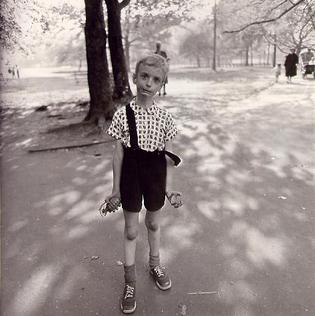
Child with Toy Hand Grenade in Central Park, N.Y.C. 1962 (1962) is a famous black and white photograph by Diane Arbus.

Nude photography is the creation of any photograph which contains an image of a nude or semi-nude person, or an image suggestive of nudity. Nude photography is undertaken for a variety of purposes, including educational uses, commercial applications and artistic creations.

The Sunday Times Magazine is a magazine included with The Sunday Times. In 1962 it became the first colour supplement to be published as a supplement to a UK newspaper, and its arrival "broke the mould of weekend newspaper publishing".
Neil Selkirk is a British and American photographer known for his portraiture.

Sandro Miller, known professionally as Sandro, is an American photographer. He has worked with actor John Malkovich.

The participation of women in photography goes back to the very origins of the process. Several of the earliest women photographers, most of whom were from Britain or France, were married to male pioneers or had close relationships with their families. It was above all in northern Europe that women first entered the business of photography, opening studios in Denmark, France, Germany, and Sweden from the 1840s, while it was in Britain that women from well-to-do families developed photography as an art in the late 1850s. Not until the 1890s, did the first studios run by women open in New York City.
Samuel Fosso is a Cameroonian-born Nigerian photographer who has worked for most of his career in the Central African Republic. His work includes using self-portraits adopting a series of personas, often commenting on the history of Africa. One of his most famous works of art, and what he is best known for, is his "autoportraits" where he takes either himself or other more recognizable people and draws them in a style of popular culture or politics. He is recognized as one of Central Africa's leading contemporary artists.
Peter Curtis Bunnell was an American author, scholar and historian of photography. For more than 40 years he had a significant impact on collecting, exhibiting, teaching and practicing photography through his work as a university professor, museum curator and prolific author.
Yolanda Cuomo is an American artist, educator, and art director known for her collaborations and intuitive design work with visual and performing artists, including Richard Avedon, the estate of Diane Arbus, Paul Simon, Laurie Anderson, Twyla Tharp, Laurie Simmons, Donna Ferrato, Larry Fink, Philip-Lorca diCorcia, Sylvia Plachy, Gilles Peress, John Cohen, Paolo Pellegrin, Peter van Agtmael, Andrew Moore, and the estate of Al Taylor. Since the mid-1980s Cuomo has often collaborated on books and exhibitions with the Magnum Photos agency and Aperture.
Sophie Hackett is the curator of photography at the Art Gallery of Ontario, Toronto.













